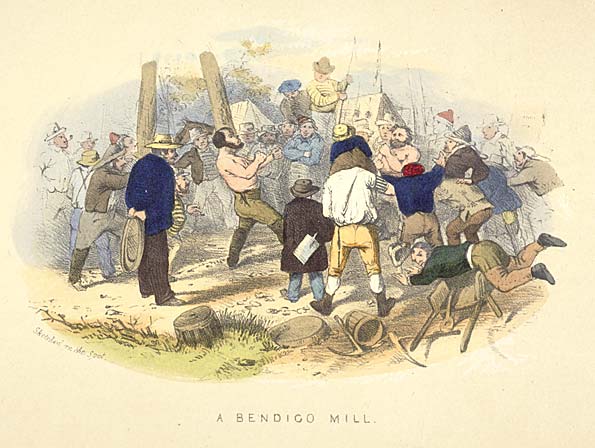 A boxing match in Bendigo, 1853
A boxing match in Bendigo, 1853
TLF ID R3178
This is a hand-coloured lithograph, measuring 15.8 cm x 19.5 cm, entitled 'A BENDIGO MILL'. It was made by Samuel Thomas Gill (1818-80) from a sketch he did on the spot as he watched a boxing match in Bendigo, Victoria, and it featured in his publication 'Sketches of the Victoria gold diggings and diggers as they are'. The scene is chaotic as two men, stripped to the waist and bare-knuckled, face up to each other in a boxing match. They are being watched and egged on by a disorganised crowd of interested gold miners standing in a circle around the fighters. Some of the miners still hold the tools of their trade (a spade and a pan), while assorted buckets, barrows and pickaxes litter the foreground. Only a few members of the crowd have been drawn in any detail.
